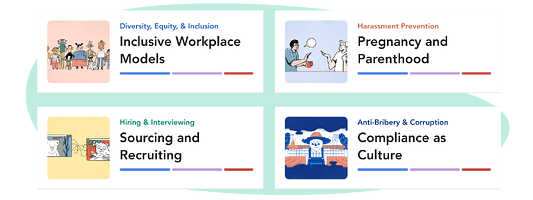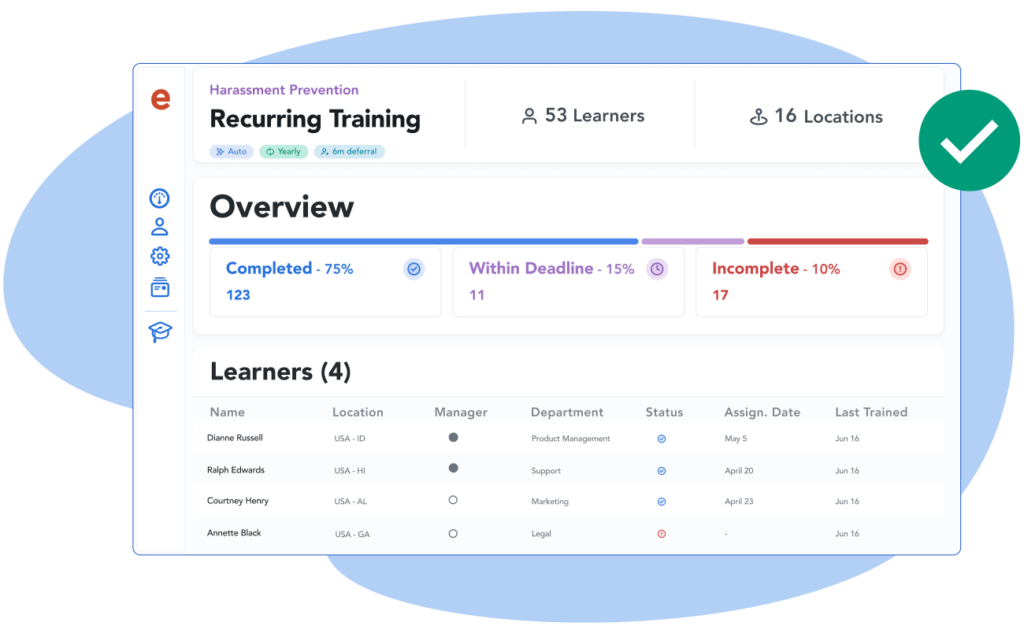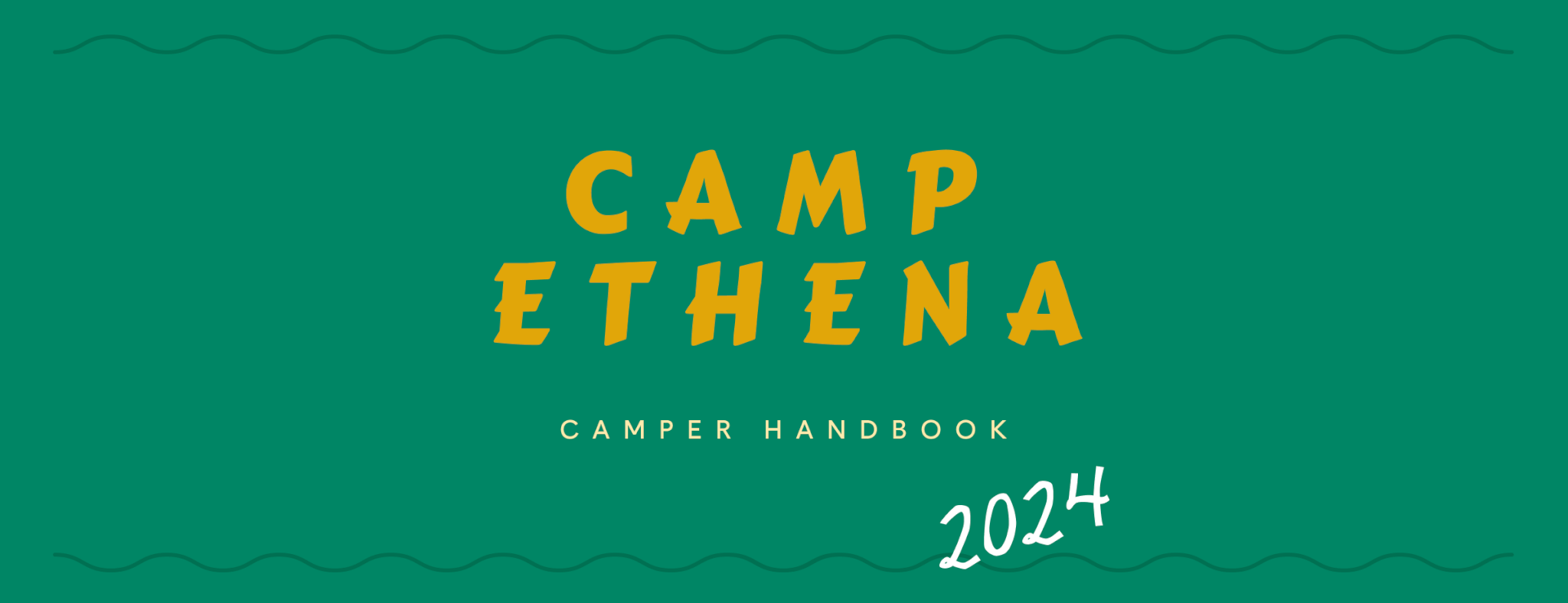Everybody knows that employee training is a 15-second process. Workers simply ingest a blue or red pill offered by an HR manager named Morpheus, and they instantly gain all knowledge required to thrive in their job. Wait, hold on. That’s actually a scene from the forthcoming installment of The Matrix film series, where Neo becomes a video game producer and writer.
In fact, real employee training is a bit trickier. It’s also immensely important, as it sets the stage for your entire workforce culture. Yet when it’s done right, employee training can be oddly enjoyable, even fun. Did we really just say “fun”? Well, yes. As long as you’re doing it right…
What is employee training?
Employee training is a process in which the members of a workforce learn the skills, procedures, and standards they will need to adequately and effectively do their jobs. All workers need to be trained in best practices for their chosen profession. If you’re a baseball player, you go to Spring Training. If you’re a professional chef, you go to culinary school, or at least lie in bed and watch endless cooking videos on YouTube. If you’re part of a corporate workforce, you need all sorts of training, from technical skills to a Code of Conduct.
If you’re a manager or in HR, you know that designing a training program comes with a lot of responsibility. Your team’s ability to learn expectations, absorb organizational culture, digest the company’s standards for ethical behavior, and ultimately thrive in their job is all going to be a reflection on you. (Scary! Thrilling! Both?) This means you need to assess what skills need to be taught, and what the best platform for teaching those skills might be.

6 types of employee training
The phrase “employee training” is rather broad. It covers many types of courses and activities that shape a workforce’s culture and its base of knowledge and skills. Rather than describe employee training as a vague, one-size-fits-all blob, let’s break the concept down into six main categories.
1. Technical training
Technical training describes the learning and development that workers need to properly do their jobs. For example, if your company uses customer relationship management (CRM) software, your workers — especially those in entry-level roles — would need training sessions that focus on that software and best practices for using it. If you operate an assembly line, an effective training program might focus on the use of specific machines.
But don’t take the word “technical” too literally; your training plan doesn’t have to involve software or machines. If your employees practice business-to-business (B2B) selling, your technical training efforts might focus on interpersonal sales techniques — no machines required!
2. Soft skills training
Soft skills are interpersonal skills, like emotional intelligence and communication skills, that let business teams work harmoniously, promote camaraderie, and meaningfully connect with customers. Your employees can have all the hard skills imaginable — computer programming, product design, accounting, customer conversion — but if they lack critical soft skills, good luck reaching your business goals. Soft skills training methods tend to focus on careful listening, giving feedback, and balancing the needs of every stakeholder in a project.
It can even include manager training, who we believe are the backbone of a company’s culture. Navigating situations like what to do when your direct reports are underperforming, or when they bring up that they have a mental health challenge, all require soft skill training. (Curious what one would like, take our manager training for a spin – it’s free!)
3. Compliance training
You’ll use compliance training to get your team up to standards with respect to ethics, harassment, and financial propriety. In many states, labor laws require that all workforces offer certain types of harassment prevention training, like sexual harassment training and anti-discrimination training. Other compliance training targets specific industries, like anti-money laundering training for finance companies and HIPAA training for those related to health care.
4. Customer service training
Customer service training blends soft skills like communication with technical skills related to order fulfillment. A customer service representative will interface with clients, helping them navigate issues ranging from logistics (“my shipment never arrived”) to customer expectations (“this dress is the color of a strawberry daiquiri”) to new sales opportunities (“I loved it so much, I want to buy one for my entire office”). Therefore, the best customer service learning experiences will teach workers how to carefully listen to client needs and also give them the skills needed to fulfill the client’s requests — or at least transfer them to someone who can.
5. Safety training
The importance of workforce safety is obvious. You can’t have a healthy, productive workforce if your entire team got sucked into the industrial paper shredder. Okay, maybe that specific catastrophe is not going to happen, but you still need to make sure everyone in your company is prepared for disasters like fires or flooding, and also knows the proper way to operate industrial equipment, drive company vehicles, and transport potentially hazardous materials like lithium ion batteries.
This sector of employee learning also includes Data Protection training. The truth is that most workers don’t spend their days in a factory with big scary machines, but plenty spend their days on computers loaded with sensitive information. A data breach can wreak havoc on a company, so team leaders increasingly include cybersecurity as part of their overall safety training.
6. Company policy training
You can create an employee training and development program to set standards for all members of your workforce, which would include Code of Conduct training. Such employee training lays out expectations for your entire team. This can include just about anything that impacts a workforce, whether that’s:
- A trade secret confidentiality policy
- A dating policy
- A work-from-home policy
- A time off policy
- An office behavior policy
- Or a policy about all those used coffee mugs in the break room sink
A lot of company policy training comes during the onboarding process, when new hires get up to speed on company operations. A comprehensive onboarding blends learning technical skills with assimilating the company protocols that keep the workplace humming. Of course when company policies change, all employees new and old must get trained on the most up-to-date standards.
Also, we believe in the power of repetition. Our trainings are designed in microlessons so whenever it is timely to resend a training to your entire workforce, doing so is a breeze. Have an HR complaint come in on harassment? Send out a harassment prevention microlesson in 5 minutes to your whole workforce. Encounter new phishing attacks? Send out a Data Protection training with just a few clicks.


Why Ethena is the best employee training tool
As you begin searching for the best employee training tool, you’ll find something very apparent: there are a lot of options on the market! But not all employee training platforms deliver the same results. Ethena is our baby, so we (naturally) think we’re the best around. How can we claim this? Our edge is based on four standout features.
- Headache-free administration. Your HR team shouldn’t have to spend all its time implementing training in a piecemeal fashion. Training software should do that for you. The Ethena platform delivers the right training to the right employee at the right time, with no training fatigue or compliance burnout. Just connect your human resources information system (HRIS) platform through many of the most popular HR software integrations, or upload a CSV to let the onboarding begin!
- Engaging, cringe-free content. Has a business exec ever said: “The best way to improve our bottom line is to force all our employees to watch a dull, sleep-inducing training on harassment prevention”? Obviously not, and yet a lot of those execs end up subjecting their workers to exactly just that kind of content. Ethena breaks free from that nonsense with engaging training modules filled with bite-sized articles, colorful comics, podcast-esque lessons, and unique videos.
- Completion tracking. If you’re paying for employee training software, the software should stay on top of progress for you. Ethena makes it easy to login and complete training modules, and sends push notifications to keep them engaged and on track for training completion. HR and people ops get automated workplace learning reports that show lesson-completion progress.
- A learning strategy that workers actually like. Wanna guess how many surveyed workers rate their digital compliance or ethics training as “excellent”? Only 17 percent. But ask Ethena trainees how much they liked their company’s employee training program, and they gave it over 1 million positive reviews. That positivity makes it far more likely that Ethena-trained workers will complete their training programs and retain the information they learned. And that, after all, is the entire point of employee training.

Don’t settle for less than the best
Your employees and business deserve better than a second-rate solution — they deserve the best online employee training software. Fortunately, we already built it for you. Now, you just need to get a hands-on demo to see it for yourself.
To see how our compliance training platform can help your employees avoid issues, navigate tricky situations, and save HR and Compliance leaders time and resources, let’s talk! Want to see a sample training first? Make a request, and we’ll send you a fully-functioning sample straight to your inbox.











